The 10 European cities that are best in winter
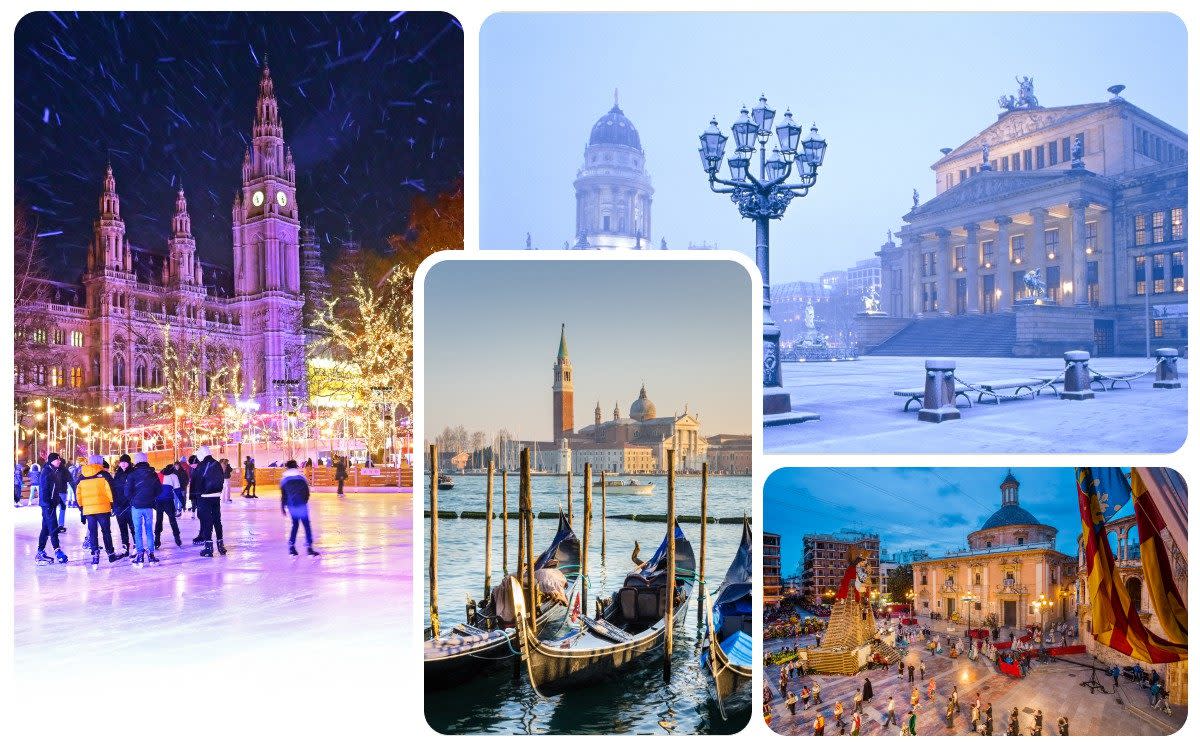
Perhaps it is the pleasing sensation of sunlight on bare skin, but we are effectively programmed to think of summer as the best time for travel. It is not just that the hottest months coincide with the crucial window of the main school holidays, so we learn the habit from a young age. It is that bright evenings and technicolour sunsets are hard-wired into our psyche. There is a reason why so many big-hit songs in the popular music canon – Summer Nights, In The Summertime, Summer Of 69, Boys Of Summer, Summer In The City – have the S-word in their titles, and don’t concern themselves with the winter.
And yet. And yet… there is a school of thought which says that the much-loved period between June and September is not automatically the ideal moment for a break. And not just because our most recent summer was so hot that wildfires strafed Greek hillsides, and evacuations were needed on Rhodes. Some destinations simply look and feel more glorious, not in the dazzle of an August midday, but when the mercury slips downwards.
Cities especially. A busy metropolis can be a sort of hell in July; train carriages turned to sweat-boxes, tarmac sticky under foot. By contrast, winter can make some of our key capitals much more intriguing, beckoning visitors into museums, galleries and churches.
And some cities, quite specifically, work better in winter. The selection below, perhaps.
These 10 dots on the European map all have plenty to offer during August. But thanks to seasonal festivities, Christmas markets, or just the absence of crowds, each of them may be a more splendid proposition for travel once December and January come into focus…
Skip ahead:
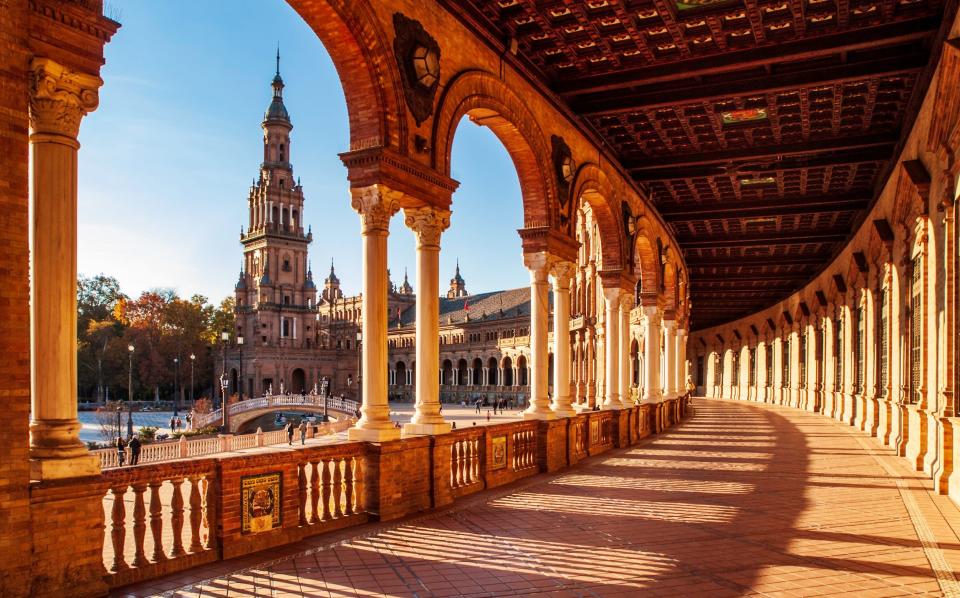
Seville
When to go: November–March
So warm is the weather in the Andalusian capital that winter only really passes through as a token gesture. You can expect high temperatures of about 20C in November and March, and nothing substantially colder in the interim. Indeed, there is an argument that Seville feels far more pleasant at the start of the year, having extricated itself from the mid-thirties heatwave that holds it in its grip from June to September. Go in February instead, and the spectacular Setas de Sevilla – the latticework of giant wooden “mushrooms” that towers over Plaza de la Encarnación (setasdesevilla.com) – becomes an art installation from which you can appreciate the cityscape, rather than a big parasol beneath which to shelter.
Must-see: The Alcazar (alcazarsevilla.org), the royal palace which remains the city’s most stylish reminder of Moorish rule. That the cooling effects of its marble walls and tinkling fountains are much less important in “the winter” does not lessen their elegance.
How to do it: Kirker Holidays (020 7593 2288; kirkerholidays.com) offers three-night stays at the four-star Casa 1800 hotel, from £738 per person – with flights and transfers.
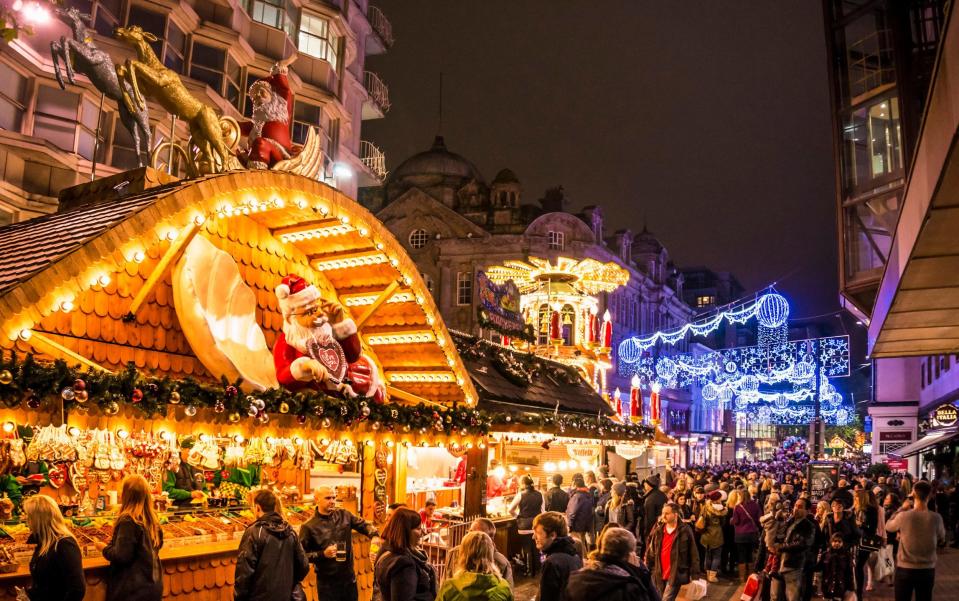
Birmingham
When to go: November–December
Britain’s second city (calm down Manchester; take a seat Edinburgh) has done a fine job of improving its image since the turn of the millennium, and you might easily spend a long weekend in its company, ambling along its celebrated network of canals, or picking up something which glitters in the Jewellery Quarter (birmingham-jewellery-quarter.net).
However, the glitter intensifies at this time of year – as what is somewhat confusingly known as the Frankfurt Christmas Market (Birmingham is twinned with the fifth biggest German city) takes over Victoria Square and New Street. Yet if the name is a minor oddity, the event has become a major triumph, growing from a cluster of some 25 stalls when it was first held (in 2001) to what is now purportedly the largest festive market outside Germany and Austria, with more than five million visitors per year. Gluhwein, bratwurst, and small iced biscuits? Yes, all of those – until December 24 (thebfcm.co.uk).
Must-see: The market’s emblematic moose head – which is usually fixed to one of the stalls on Victoria Square. Remarkably, it manages to sing – and tweet (@thechrismoose).
How to do it: The Grand Hotel (thegrandhotelbirmingham.co.uk) has rooms from £107.
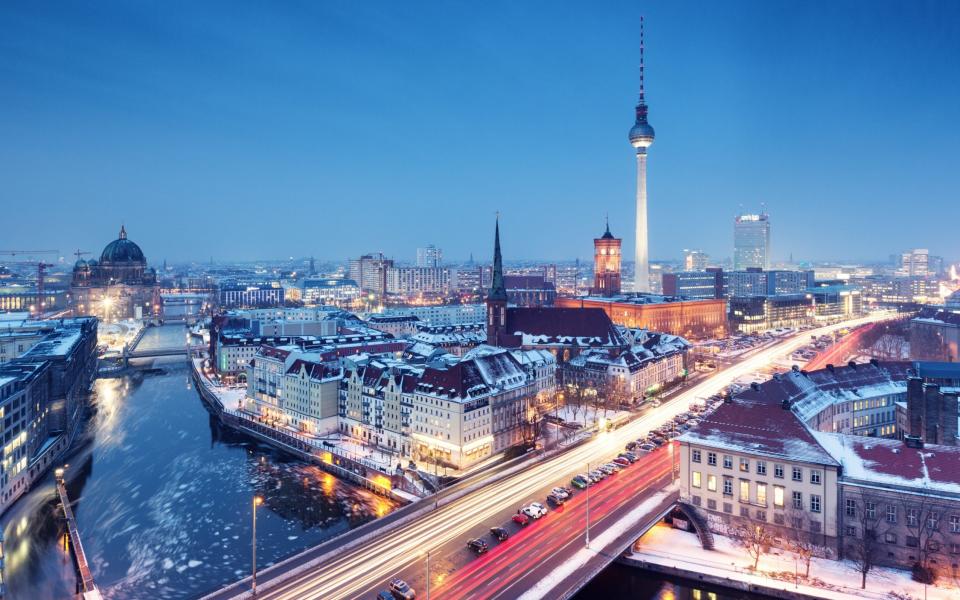
Berlin
When to go: December
If you are old enough to remember the Wall through the heart of it, Berlin always feels like a winter city – the divided epicentre of the Cold War whose weather fell into step with its geopolitical situation. Logic dictates that the German capital does indeed have a summer, when the Tiergarten is abloom opposite the Reichstag – but somehow, Berlin calls out more persuasively in those months when you need to pull your coat tight around you, trudging through streets where barbed wire once ran; where Bowie drew inspiration.
Of course, a long weekend in the city doesn’t have to be an exercise in retro-gloom. Not least in December, when you can scarcely move for the aroma of cinnamon and the sight of fairy-lighted Christmas stalls – on, for example, Potsdamer Platz and Breitscheidplatz.
Must-see: Tempelhof (thf-berlin.de), the former Berlin airport which is celebrating its centenary in 2023, 15 years after its final flight took off. It is now largely an urban park.
How to do it: A three-night stay at the Hotel am Steinplatz, flying from Newcastle on December 14, starts at £499 a head via Jet2 Holidays (0800 408 0778; jet2holidays.com).
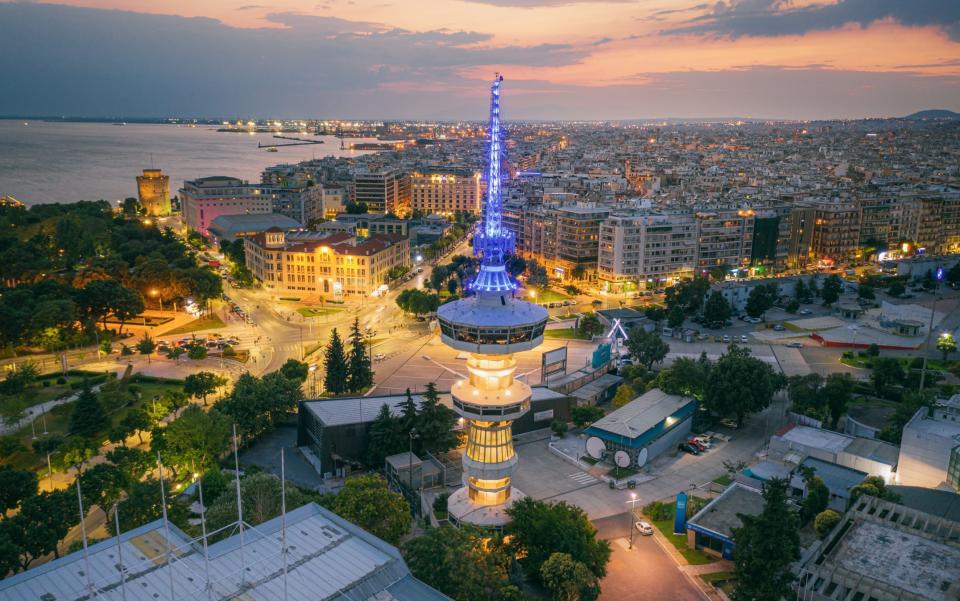
Thessaloniki
When to go: December
The wildfires and fortysomething temperatures of last July may already have made you reconsider whether the Greek summer is now a suitable window for a holiday. If so, the country’s second city could grab your attention. Whereas Athens looks its best in warm weather, the Parthenon shimmering in the heat haze on its Acropolis rock, Thessaloniki is a more complicated character. Its major landmarks – the sturdy slab of Ottoman masonry that is the White Tower; the Roman Forum sprawling dustily on Filippou Street – are more curios for interested travellers than obvious baubles for Instagram ubiquity; the bars of its trendy warehouse district Ladadika make for evenings indoors, as much as outside.
In other words, Thessaloniki is an ideal candidate for an off-season mini-break, and December, when there’s a Christmas tree in Aristotelous Square, is as good a time as any.
Must-see: Kapani Market (kapani.gr), the food hub where, amid hanging meats and vats of olives, you realise that you are in the real Greece, rather than one of its holiday resorts.
How to do it: A three-night stay at the four-star Imperial Palace, flying from Heathrow on December 14, starts at £395 a head, via lastminute.com (020 3386 8411; lastminute.com).
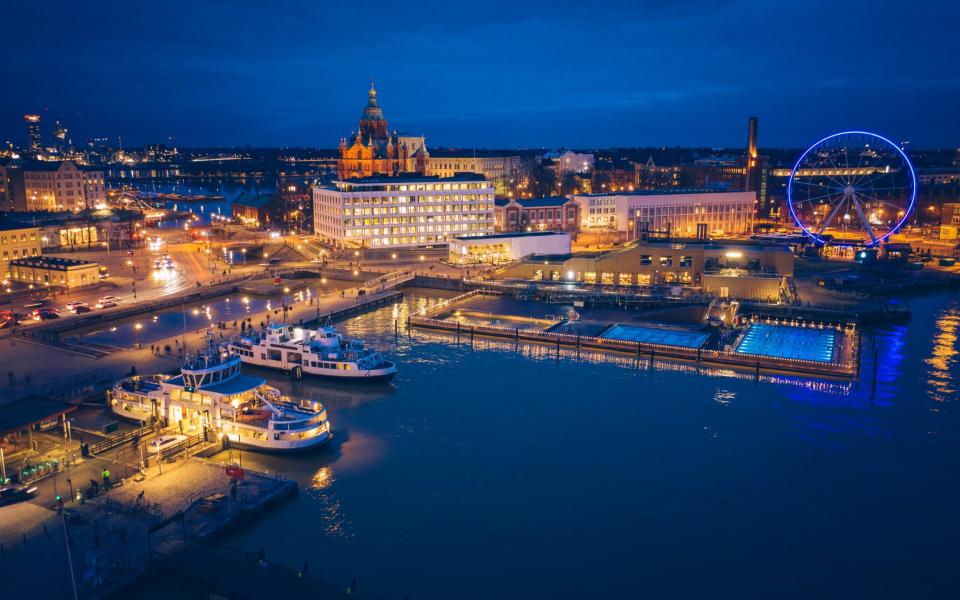
Helsinki
When to go: December-January
The Finnish capital is a place of seasonal extremes. Not of heat, but of light. In June and July – when, on each side of the solstice, the sun is high in the Northern Hemisphere sky – the day barely bothers to end. During December and January, it practically never starts.
And yet Helsinki summons all its powers of seduction to be at its most appealing amid the six or so hours of “sunshine” on offer in the depths of winter. If snow has fallen, the streets take on a reflective quality that somehow amplifies the meagre amount of natural light; the process boosted by the twinkle of man-made illumination. The effect is particularly striking on the main harbour, which has had something of a makeover in the last decade. Those who feel brave can absorb the whole scene from the hot saunas and cold shocks of the Allas Sea Pool complex (allasseapool.fi); those who think that sounds like utter madness can take in the same view from the adjacent Sky Wheel (skywheel.fi).
Must-see: Helsinki’s Lutheran cathedral, the Tuomiokirkko (helsingintuomiokirkko.fi), could easily be an iced Christmas cake, especially with the city’s main festive market taking place at its feet – on Senaatintori square (December 1–22; tuomaanmarkkinat.fi).
How to do it: Regent Holidays (0117 453 7223; regent-holidays.co.uk) sells a four-day “Helsinki Winter City Break” from £695 per person – including flights and transfers.
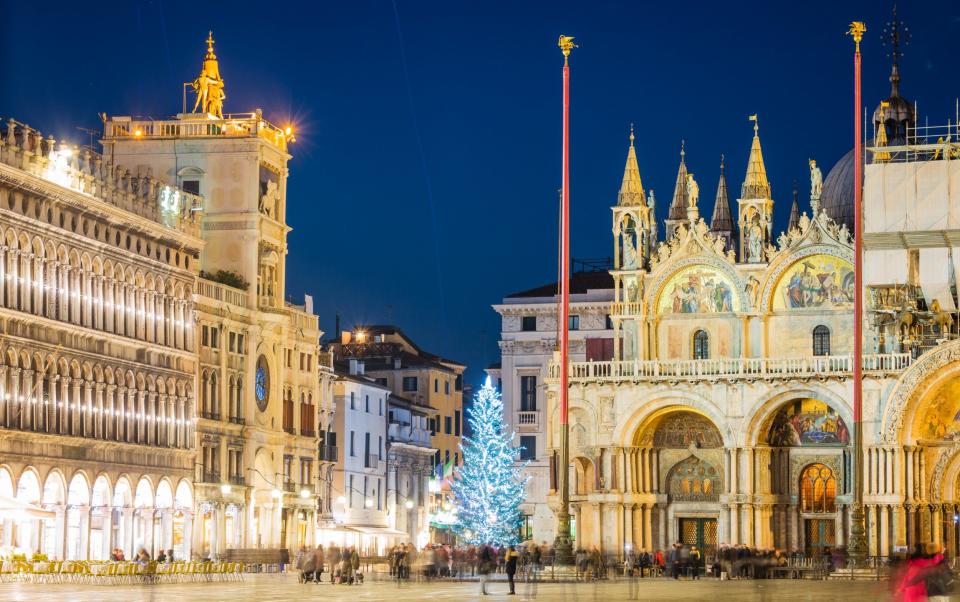
Venice
When to go: December-March
No one would suggest that Italy’s formidable lady of the lagoon does not look beautiful in the summer – the sun dancing on the inlaid gold on the facade of St Mark’s Basilica; that wider Adriatic setting a deep and convincing blue. But my, La Serenissima is busy in that period. Five million tourists pay a visit every year – the vast majority in high season.
Visitors spend 1.3 million nights in the city every month between June and October. Make your pilgrimage later, though, and the picture alters – that figure more than halves to 610,000 in December. True, Venice is colder, but you won’t need to queue to enter its foremost church. And in the shadows in its passageways, it resembles what it always was: less a Renaissance theme park, more a medieval miracle.
Must-see: La Fenice, Venice’s noble opera house, whose 2023–2024 season starts on the weekend of December 9–10, with a pair of Mahler concerts (from €116; teatrolafenice.it).
How to do it: A four-night dash to the five-star Ca’ Sagredo hotel, flying from Gatwick on December 8, costs from £804 per person through Citalia (01293 765 055; citalia.com).
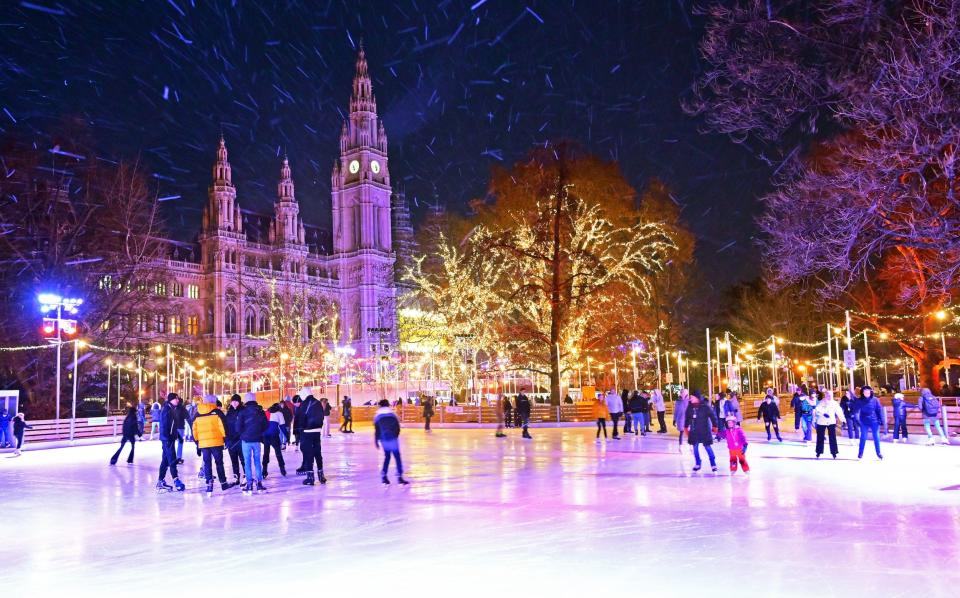
Vienna
When to go: January–March
The Austrian capital has long taken the admirable stance that the rituals of Christmas do not have to be restricted to the solitary month of December. However, unlike the average British supermarket, it does not extend the season by draping itself in tinsel the moment October ticks around on the calendar. Instead, it injects a welcome blast of festive sparkle into the time when it is needed the most – the first three gloomy chapters of the new year.
Of course, Vienna looks like a fairytale – Cinderella, probably – even in summer, such is its melodic chorus line of former royal palaces (the Hofburg being the best example; see sisimuseum-hofburg.at) and gilded coffee salons (try the venerated Cafe Schwarzenberg; which dates to 1861; cafe-schwarzenberg.at). But the glass-slippers effect is most discernible in the long winter evenings, in the ice rinks that proliferate around the centre.
Must-see: Vienna Ice World (wienereistraum.com), the enormous rink which appears on Rathausplatz – in front of the neo-Gothic whimsy of Vienna’s City Hall – once Santa has ho-ho-hoed back to the North Pole. In 2024, it will be in situ from January 19 to March 3.
How to do it: Luxury specialist Abercrombie & Kent offers a four-night break to Vienna from £2,075 a head – with flights and transfers (0333 060 2871; abercrombiekent.co.uk).
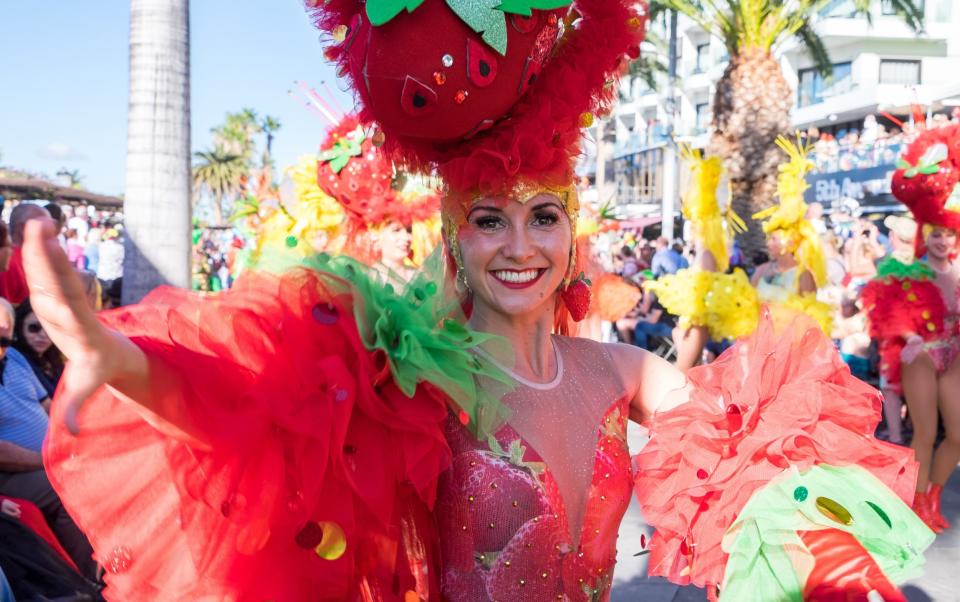
Santa Cruz de Tenerife
When to go: February
You do not have to go as far as Rio de Janeiro or New Orleans to find a winter party in the pre-Lenten tradition. You can also find one on a volcanic rock in the eastern Atlantic.
Rather a big one too. So significant is the Carnival of Santa Cruz de Tenerife that the city is twinned with Rio. It borrows plenty from Brazil – sequins, feathers, parades, a lot of dancing – over the course of a week, and is the main reason to swap the resorts in the south-west of the largest Canary Island for its capital in the north-east. The crux of the 2024 fiesta will take place between February 7 and 14 (see visittenerife.es) – concluding on Ash Wednesday with a spectacle not usually seen on the Copacabana. The Entierro de la Sardina (Burial of the Sardine) is a Spanish idiosyncrasy that involves the destruction of a fish sculpture – it is normally burned – to announce the formal end of the festivities (although the party restarts at the weekend. There will be further fun on February 17–18).
Must-see: You can’t go to Tenerife and not hit the beach. Playa de las Teresitas, a short hop north of Santa Cruz, is the island’s finest (with the help of a Saharan sand transplant).
How to do it: While hotels can sell out during the carnival, rooms are still available. A five-night stay at the five-star Iberostar Heritage Grand Mencey, flying from Manchester on February 10, costs from £770 per person via Expedia (020 3024 8211; expedia.co.uk).
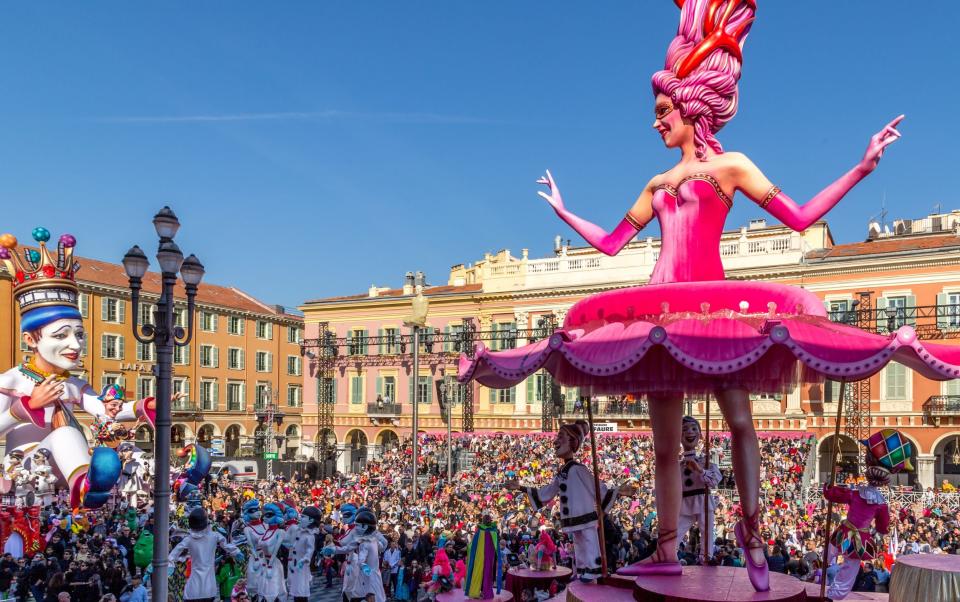
Nice
When to go: February–March
If it is a minor surprise to hear of Mardi Gras mayhem in the Canary Islands, it may be a greater shock to learn that the ticker-tape also swirls on the Cote D’Azur – where the Carnaval de Nice has been a source of Shrove Tuesday merriment since the year 1294. This two-week extravaganza also has plenty in common with Ipanema and Louisiana – although, rather unconventionally, the 2024 edition is currently scheduled to commence three days after Ash Wednesday (February 17–March 3; full details at nicecarnaval.com).
Whether it makes Nice a more attractive city in winter probably depends on how much you enjoy a summer-evening stroll along the Promenade des Anglais, but the carnival is proof that there is more to this French hotspot than pricey cocktails and tiny beachwear.
Must-see: The Colline du Château. That Nice’s dominant hill no longer has the castle it promises (Louis XIV had it destroyed in 1706) does not diminish the majesty of the view.
How to do it: A four-night stay at the Splendid Hotel and Spa, flying from Gatwick on February 29, starts at £362 a head via British Airways (0344 4930787; ba.com/holidays).
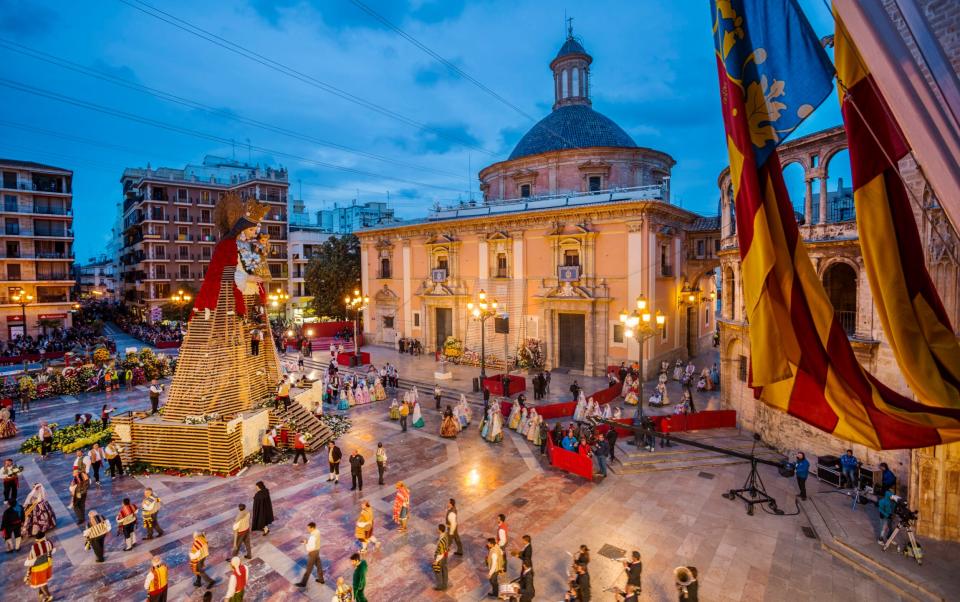
Valencia
When to go: March
Spain’s third-biggest city is hardly an ugly duckling in summer. A calmer, quieter Barcelona, it stands as the focal point of one of the country’s loveliest stretches of shoreline, the Costa del Azahar (Orange Blossom Coast). Pay it a visit in the hot months, and the sumptuous sand of Playa de la Malvarrosa will meet all your beach requirements.
And yet, the highlight of the Valencian calendar is not some July happy hour, but a wild near-three weeks at the end of winter. A different beast to Mardi Gras, Las Fallas is both a celebration of the coming spring and a farewell to its seasonal predecessor, its roots buried in the medieval habit of carpenters clearing out their workshops as the cold and dark began to dissipate. Yet, where once it was scraps of wood being set alight, the modern logs on the fire are the many elaborate papier-mâché sculptures – sometimes of unpopular politicians and overbearing celebrities, but often simply works of art – that decorate the heart of the city for the duration of the festival (March 1–19). These are put to the torch on the chaotic final night; a pyromaniac’s dream where the sky glows orange.
Must-see: The main square, Plaza del Ayuntamiento, and its mascletà – a daily (2pm, on all 20 days of the festival) barrage of firecrackers and explosives that makes the ears ring.
How to do it: A four-night stay at the Petit Palace Plaza de la Reina, flying from Gatwick on March 16, starts at £866 a head, with EasyJet (0330 551 5165; easyjet.com/holidays).

